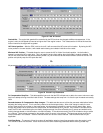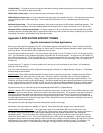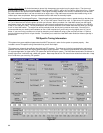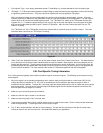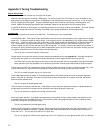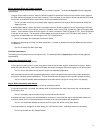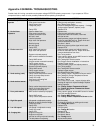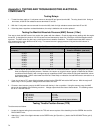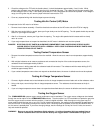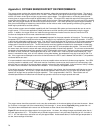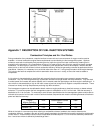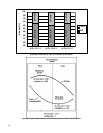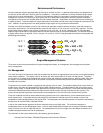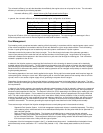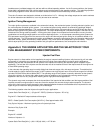
74
Appendix 5 TESTING AND TROUBLESHOOTING ELECTRICAL
COMPONENTS
Testing Relays
1 - To test the relays, apply a 12 volt power source to terminal 85 and ground terminal 86. The relay should click. Using an
ohm meter, check for low resistance across terminals 87 and 30.
2 - With the 12 volt power source removed from terminal 85, check for high resistance across terminals 87 and 30.
3 - If the relay does not perform as described above, the relay is defective and must be replaced.
Testing the Manifold Absolute Pressure (MAP) Sensor (1 Bar)
One way to check the MAP sensor is to monitor the system with the software. Check the map sensor readings with the engine
turned off. It should be fairly close to 101 kPa at sea level and decrease by about 3.4-3.5 kPa per 1000 feet elevation above
sea level. The MAP value may also vary a small amount due to weather conditions. The table below shows MAP values in
kPa compared to the more familiar units of in Hg. The second column is gauge pressure in Hg and the third column is
vacuum in units of in Hg.
MAP Value to Manifold Pressure Value to Vacuum Comparison
MAP Value (as read on the
computer)
Manifold Pressure Value (in Hg) Vacuum (in Hg) Relative to Ambient
Pressure Condition (sea level)
101 kPa 29.7 0.0
90 kPa 26.5 3.2
80 kPa 23.5 6.2
70 kPa 20.6 9.1
60 kPa 17.6 12.1
50 kPa 14.7 15.0
40 kPa 11.8 17.9
30 kPa 8.8 20.9
20 kPa 5.9 23.8
NOTE: Users at higher altitudes will have MAP values lower than 101 kPa as described in the above paragraph along with a
lower corresponding manifold pressure. However, the vacuum on a typical vacuum gauge is referenced to ambient
conditions and will read 0.0 with no engine vacuum regardless of MAP value unlike the sea level based third column
in the above table. A MAP value lower than 20 kPa is most likely an indication of a bad MAP sensor connection or a
MAP sensor problem.
1 - If you do not have a PC, use a digital voltmeter and tap into the ORANGE wire at the MAP sensor. With the engine off
and the key in the run position, voltage should be close to 2.0 volts.
2 - Connect a hand vacuum pump to the MAP sensor with the key in the run position. Using the vacuum pump, the MAP
sensor can be checked at the following vacuums. Voltage output should be close to these values. The following values
are for a 1 Bar MAP sensor.
20” Hg vacuum 1.1 volt
15” Hg vacuum 2.0 volt
10” Hg vacuum 2.8 volts
5” Hg vacuum 3.8 volts
0” Hg vacuum 4.6 volts at sea level (less at altitude)
Testing Throttle Position Sensor (TPS)
Test the sensor as follows:
1 - Locate the harness wiring that connects to the TPS and remove a piece of the sheathing from the GREEN wire and the
BLACK/WHITE wire.
2 - Attach the (+) lead of the digital voltmeter to the GREEN wire (pin B) and the (-) lead to the BLACK/WHITE wire (pin A)
of the TPS.



